
Incredible pictures show barn owl fighting off hungry kestrel to snatch vole Daily Mail Online
When the species of owl has a flat, dish-shaped face, their faces act as a sounding board where the sound that they hear bounces off and goes straight in their ear giving them the exact location of the sound. In this case, the prey. Save Asymmetrical Ear Openings Some owls have asymmetrical ear openings and have hearing receptors in their brains.

Owls Catch Prey for Small Chickens, Animal Closeup, Owls in Hunt Stock Image Image of night
The Barn Owl's sensitive hearing is enhanced by its facial ruff, a concave surface of stiff dark-tipped feathers. The ruff functions as a reflector, channeling sounds into the ears. Once a sound is detected, the owl orients toward it and accurately pinpoints its location to within 1.5 degrees in both horizontal and vertical planes.

Northern Sawwhet Owl (Aegolius acadicus) catching a Deer Mouse (Ohio) WildNaturePhotos, LLC
The sound-dampening structures didn't evolve by chance. Silent flight is clearly crucial for many owls' survival, and two long-held hypotheses attempt to explain this ability. The "stealthy hunting hypothesis" holds that owls fly inaudibly so that prey can't hear them coming and have less time to escape. On the flip side, the "prey detection.

A Barred Owl with prey. By Tony Rawson via Birdshare Birds, Barred owl, Bird watchers
TALONS: Owl feet have sharp talons that assist with catching prey. Great horned owl talons have a gripping force of 28 pounds. They can carry prey many times heavier than themselves. Owls will catch prey as large as ospreys, falcons, and other owls. They also eat small mammals such as rodents, rabbits, and bats and will eat snakes and frogs too!
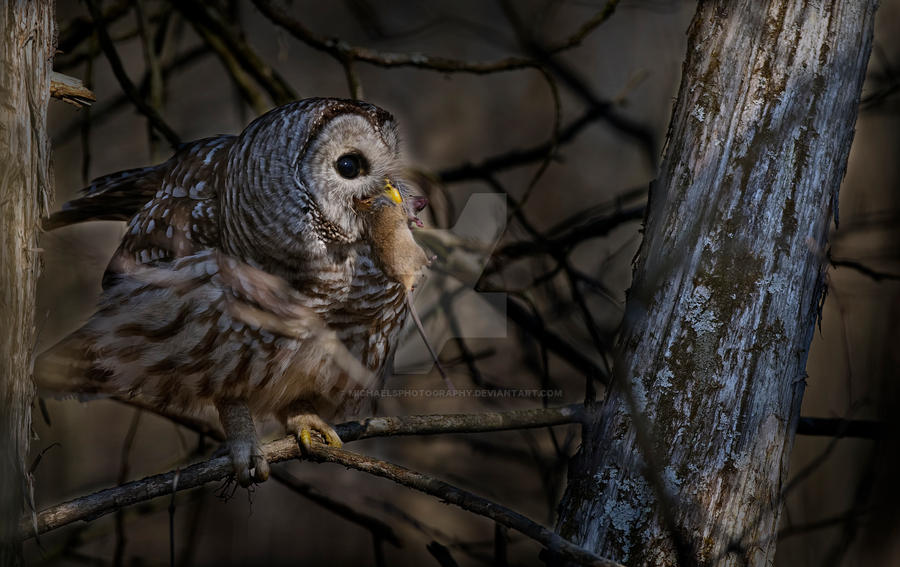
Barred Owl with Prey by MichaelsPhotography on DeviantArt
A large, powerful owl of the high Arctic tundra, colored for camouflage during northern winters. In summer it may be nomadic, concentrating and nesting where there are high populations of the small rodents called lemmings. At other times it takes a wide variety of prey, including birds as big as geese. During some winters, large numbers of.
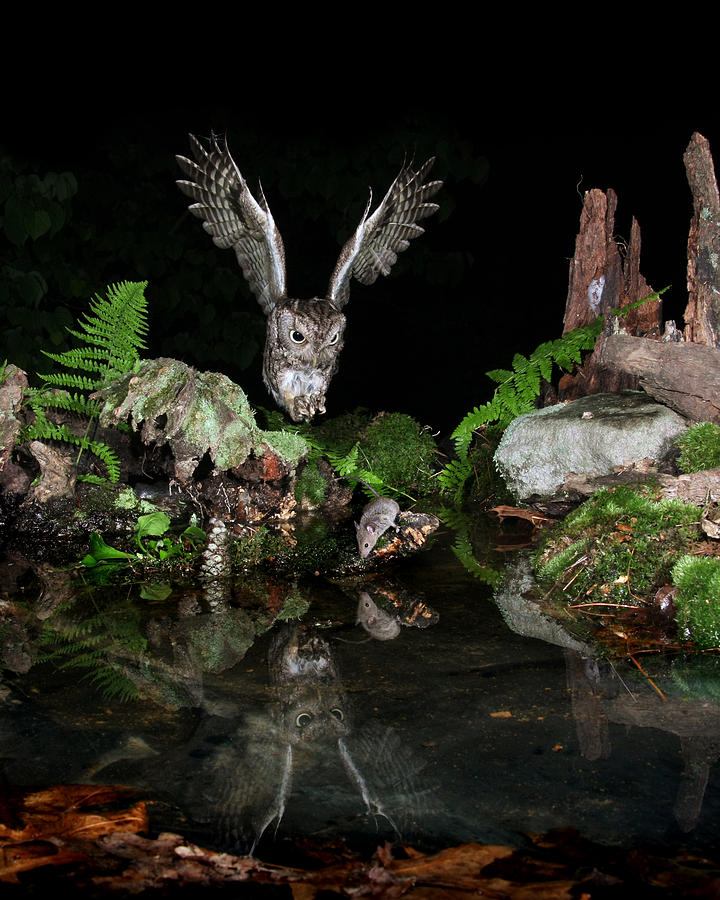
An Eastern Screech Owl Catching Prey. Photograph by Kevin Shank Family
Barred Owl Hunting a Chipmunk - Epic Pursuit in Daylight (Graphic) 612,140 views As warmer spring weather melts the snow in Canada, an eastern chipmunk (Tamias striatus) ventures out of.
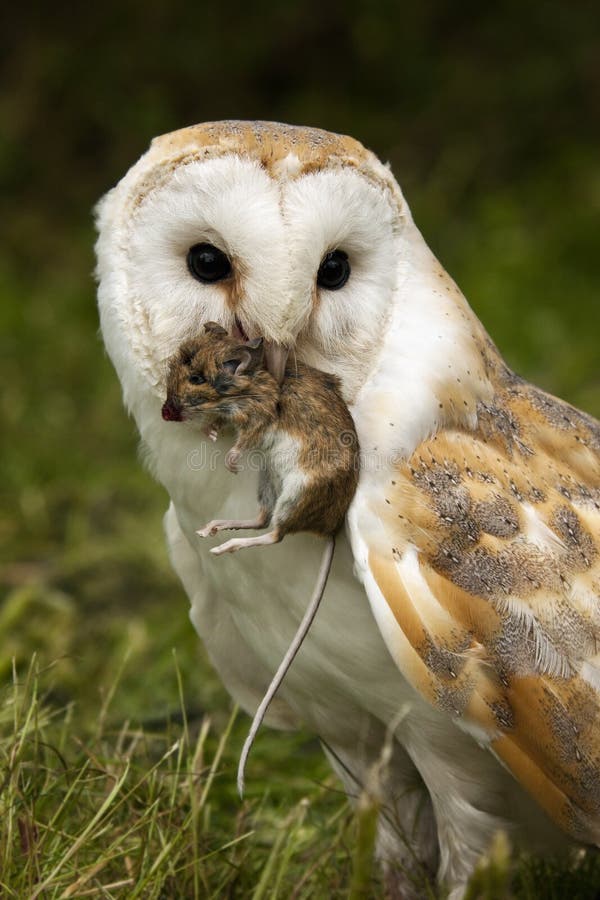
Barn Owl Captures a Field Mouse Stock Image Image of field, prey 21399513
0:00 / 3:20 Great Horned Owl on the Hunt | Nat Geo Wild Nat Geo WILD 5.11M subscribers 2.2M views 4 years ago #Owls #Birds #NatGeoWILD A Great Horned Owl syncs its ears and eyes to unleash.
Snowy owl catches his prey r/natureismetal
The ability to catch and hold onto prey is one of the primary functions of owls' long legs. Their sharp and powerful talons allow them to tightly grasp prey and prevent it from escaping. The owl's long legs also provide the leverage and strength required to hold onto prey while the beak tears off chunks of meat.
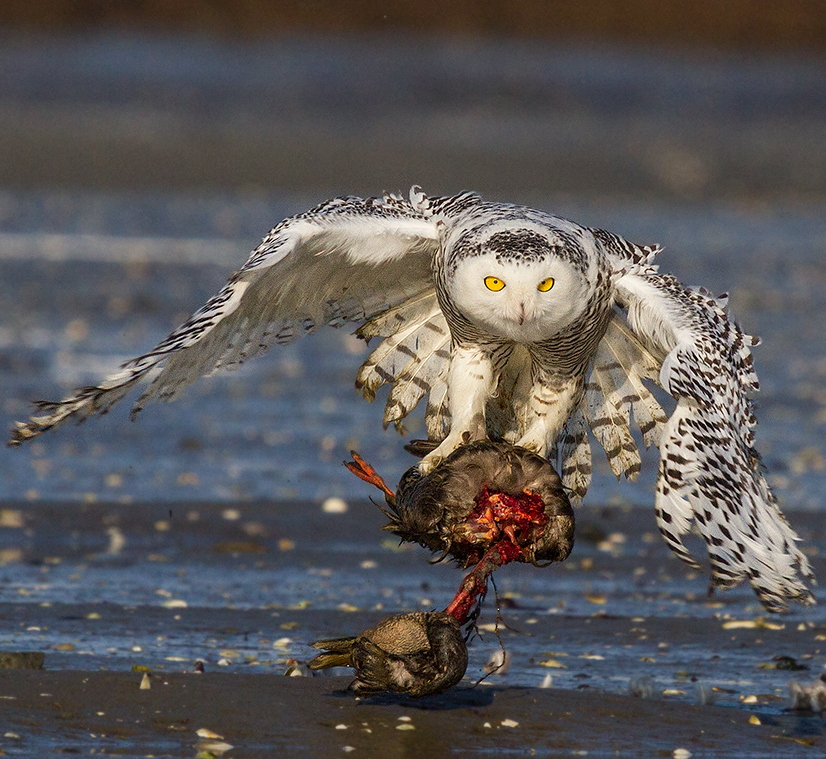
BARRY the BIRDER Do Snowy Owls catch fish?
Owl legs, surprisingly long and thin, are often hidden under feathers for insulation. These legs feature light-colored, textured skin and razor-sharp talons, essential for catching prey and secure perching. Their unique structure enhances flexibility and maneuverability. The visible joint on an owl's leg, mistaken as a knee, is actually the.
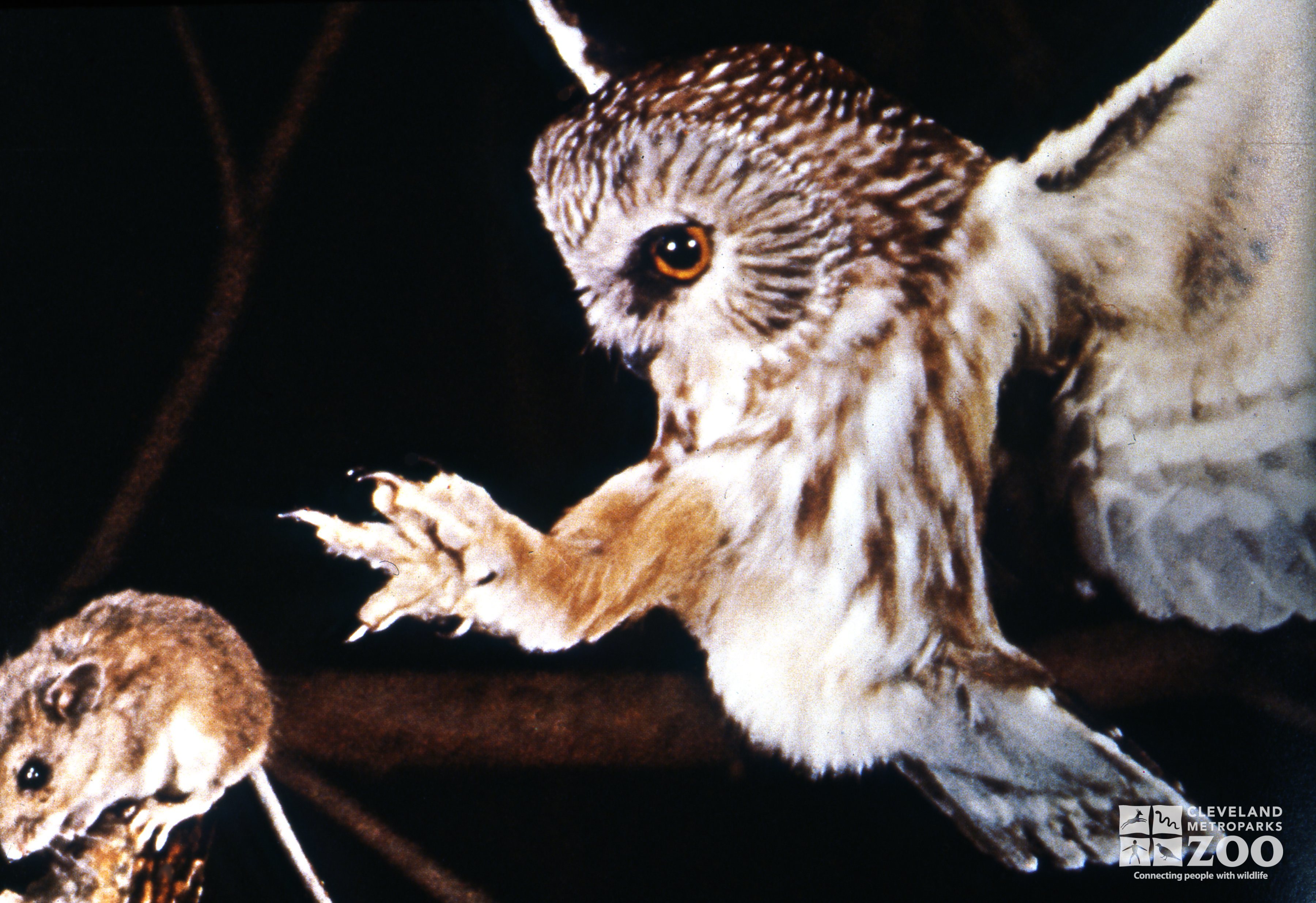
Photo Details
By Carolyn Wilke Published November 22, 2022 • 5 min read Great gray owls can find and capture voles hidden beneath almost two feet of snow, punching through hardened crusts with their legs to.

Owl Ambush
Owls that catch fish may skim over water, snatching fish on the fly (Pel's Fishing Owl) or, the may perch at the water's edge, grabbing any fish or crayfish that surfaces nearby (Blakiston's Fish Owl). Other species may wade into the water to chase fish, water snakes, crayfish or frogs. A Barred Owl with Eastern Chipmunk prey.

Barn Owl Tyto alba, adult in flight with talons extended to catch prey, Lake Corpus Christi
Owls are called raptors, or birds of prey, which means they use sharp talons and curved bills to hunt, kill, and eat other animals. There are about 250 owl species in the world; they live on every continent except Antarctica. Owls have large heads, soft feathers, and round, stocky bodies. Owls hunt, nest, and roost in.
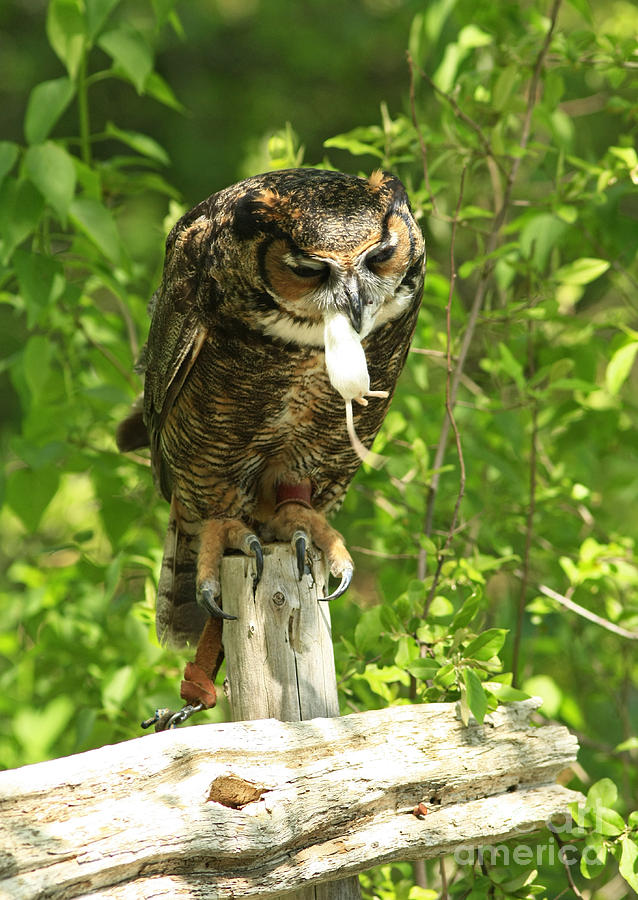
Catch of the Day Great Horned Owl Captures Prey Photograph by Inspired Nature Photography Fine
Silent Snowy Owl Attack | Alaska's Deadliest Nat Geo WILD 5.06M subscribers Subscribe Subscribed 1M views 5 years ago A snowy owl, hunts in utter silence and her unsuspecting prey will never.
/arc-anglerfish-arc2-prod-shropshirestar-mna.s3.amazonaws.com/public/OFTL3YAYMZBNRIUIDV3LKCOHKE)
Snapshot of owl focused on its prey captured by Star reader Shropshire Star
Food and Hunting Food Owls are Birds of Prey, which means that they must kill other animals to survive. Their diet includes invertebrates (such as insects, spiders, earthworms, snails and crabs), fish, reptiles, amphibians, birds and small mammals. The main food largely depends on the species of Owl.
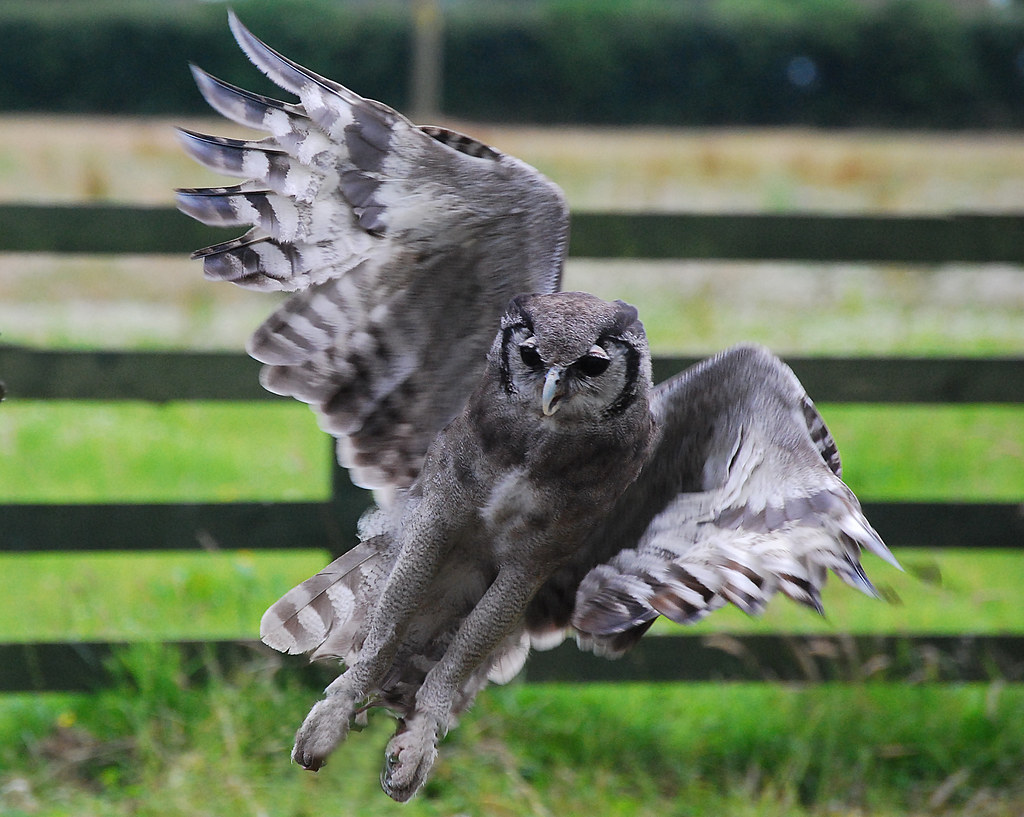
Owl Catching Prey Martin Davies Flickr
0:00 / 17:10 15 Merciless Moments of Owls Hunting Brutally The Brilliant 306K subscribers Subscribe Subscribed 689 97K views 10 months ago Owls may not be as terrifying as eagles to other.
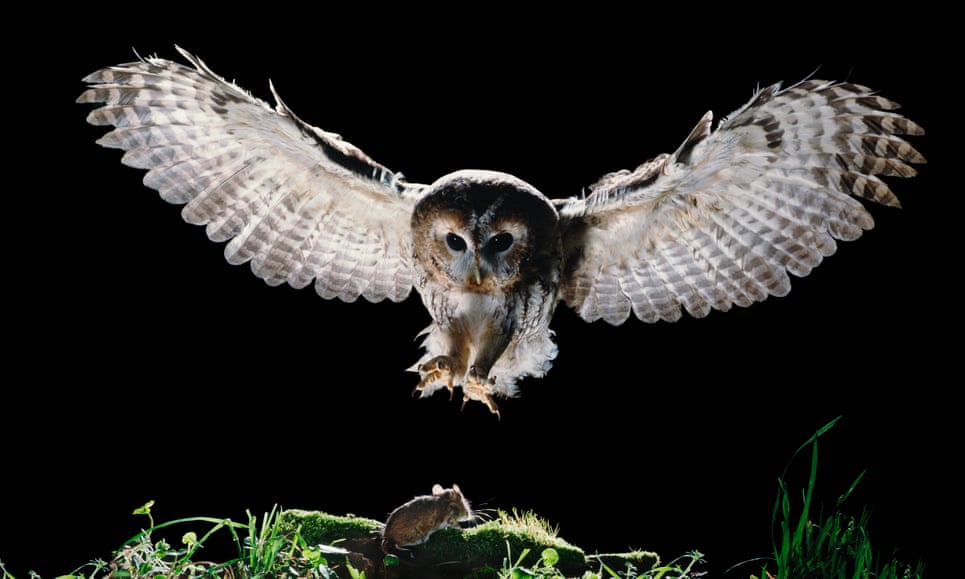
Owls use 'stealth technology' to help capture prey Focusing on Wildlife
Unlike many other birds that use brute force to catch their prey, owls have developed a range of techniques that allow them to hunt with precision and stealth. From perching on tree branches to silently swooping down on unsuspecting prey, each type of owl has its own unique way of catching its dinner. Adaptations for Nocturnal Life